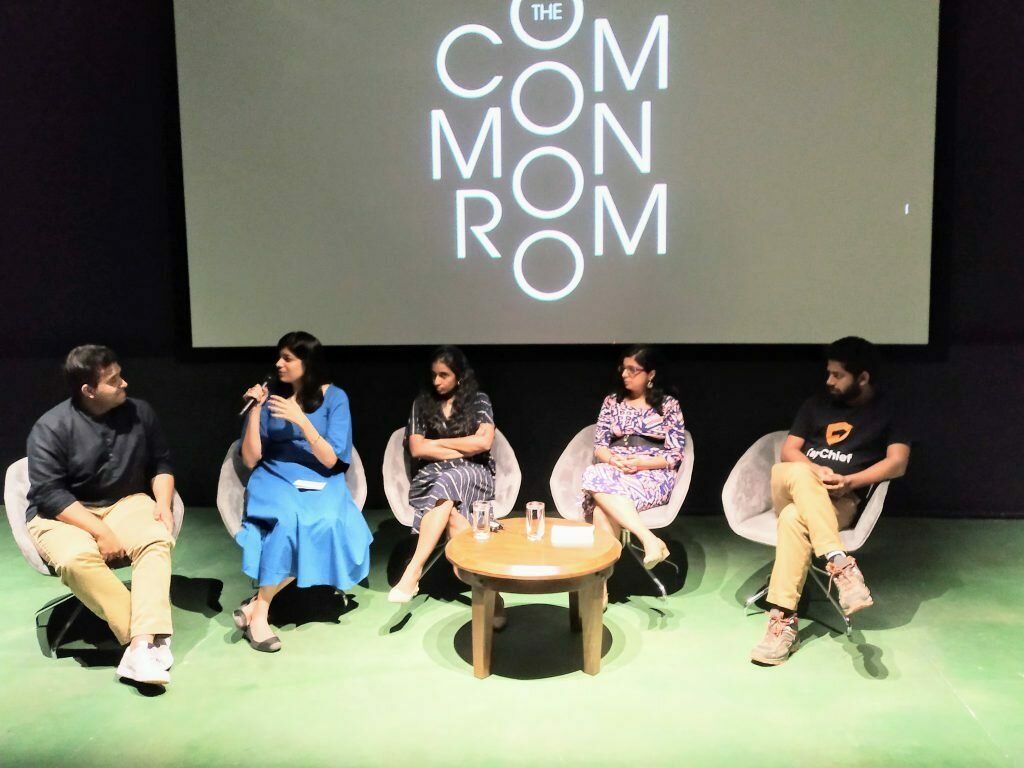Highlights From Our Recent Chai & Chatter On ‘Future Of Work’
- Published
- Reading Time
- 3 minutes
Why do companies exist? Why is the gig economy growing? What will the firm of the future look like? These were some of the questions with which we kickstarted Blume’s 7th Chai & Chatter on the theme of ‘Future of Work’. Chai & Chatter, or C&C as it is commonly called within the Blume team, is a ~monthly initiative to bring together entrepreneurs, investors, members of the startup ecosystem, and just about any curious mind, to talk, discuss, debate and exchange notes on a particular theme of relevance to the startup world.
The event started off with Sajith Pai, Director – Blume Ventures (and also my boss), laying out how Blume views the future of work. According to Sajith, gig economy and flexiwork (refer to Image 1 to understand how are they different) constitute the Future of Work megatrend, which is driven by factors such as increasing penetration of smartphones, growing tech literacy and the pioneering of new business models by startups. There is also compelling business logic behind the megatrend– employing freelancers or recruiting individuals to perform tasks, is about 20-25% cheaper for the corporate’. You can read more on Sajith’s view on Future of Work in these two articles here – 1 & 2. (For the purpose of this article, I’ve used the phrases future of work & gig economy interchangeably.)
How Blume defines the’Future of Work’ segment
Post Sajith’s presentation, we had a fireside chat between Sandeep Sinha, Co-founder & Managing Partner, Lumis Partners, and Mohit Kumar, Ex-COO, Zomato Food Delivery (and also Co-founder & Ex-CEO of Runnr, which was acquired by Zomato). While Sajith’s presentation gave the audience a broad framework to look at the future of work, Sandeep & Mohit’s conversation went deep into real life problems, challenges, & examples of gig economy & flexiwork. Questions around hiring & attrition were raised which made Mohit go back to his Zomato days and recall how not just incentives, but also well targeted content marketing & well designed loyalty programs played a crucial role in helping Zomato onboard & retain their delivery staff.
On a different note, Sandeep brought in an interesting perspective that there needn’t necessarily be a dichotomy between full time workers & gig workers – full time workers may very well do a part time gig to enhance their income. The fireside chat ended on the role of government in designing effective regulations for the gig economy. According to Sandeep, one cannot have conventional regulations apply to the gig economy. The challenge is how does one design less strict regulations for the gig economy, and make sure that the regulations leave no room for exploitation.
The final event on the agenda was a panel discussion. The panel consisted of Niranjan Nakhate (Co-founder & CEO, Frapp), Sunita Vishwanathan (Senior Associate, Unitus Ventures), Shashank Murali (Co-founder & CEO, Tapchief), Nisha Ramchandani (Outreach, Axilor Ventures & writer of ‘Future of Work’ series on CNBC TV18), and Diksha Madhok (Director & Editor, Quartz Platform, India), who moderated the panel. Shashank started off the conversation with the thought that the gig economy is not something new, but has existed for centuries – a classic case in point are Indian ‘pandits’! It was only during the Industrial Revolution that corporates started organising people (read hiring employees), largely to cut transaction costs. Sunita chipped in with the idea that the time has come for the ‘power’ to go back to the individual. Sunita also stressed on the importance of skilling and asked can the gig employer provide an ability for the gig employee to command a premium in the future? On a different note, Nisha touched upon jobs being taken away by technology & how the gig economy may help people figure out what to do ‘next’. Lastly, Niranjan highlighted how certain people are skilled at multiple things, and hence can do multiple micro tasks, thereby taking full advantage of a gig economy. Juggling between questions from the audience and points raised by the panelists, Diksha did a wonderful job of directing the panel to as many nodes as possible in the ~50 odd minutes the panel lasted.
Finally, I’d like to end this note with a quick food for thought. Bill Gurley (of Benchmark capital), one of the earliest VCs to back Uber, singles out the thing he loves most about Uber – no driver partner is ever told where or when to work. Which also means that the driver partners can decide when not to work – which ultimately means that driver partners can fit their jobs into their lives, and not the other way around. I believe that this ability to enable someone to fit one’s job into one’s life, and not the other way round, is one of the most powerful characteristics of a gig economy. What do you think is the most powerful driver of the gig economy? Is the driver more supply driven (companies pushing for it?) or more demand driven (people want it badly)?


